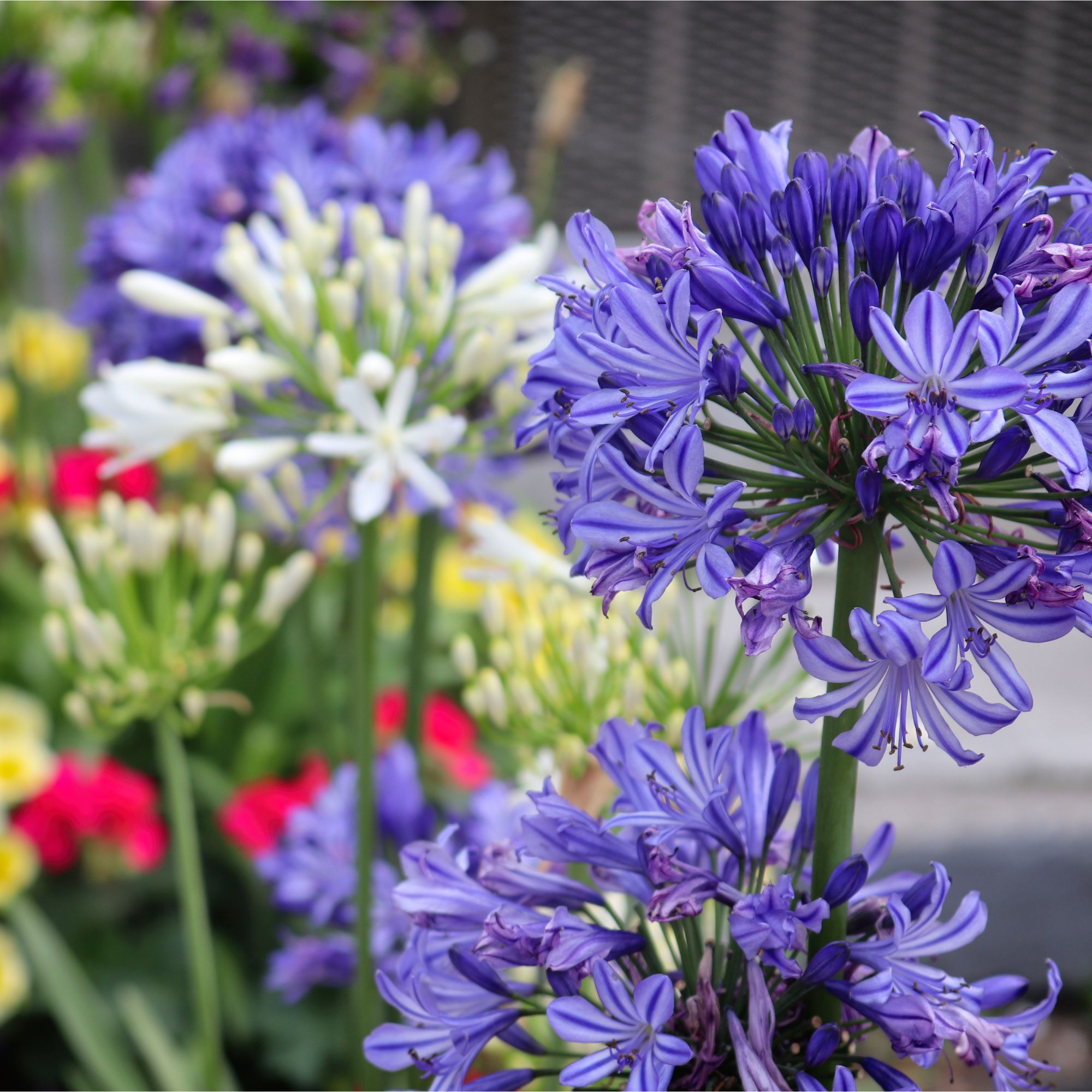
If your agapanthus is coming to the end of its flowering cycle, or you just want to promote more blooms, deadheading is a surefire way to do that. But choosing when to deadhead agapanthus is a difficult decision.
Yes, if you want to add agapanthus to your garden you need to understand that timing is everything. As well as knowing when to plant agapanthus, you also need to know when to deadhead it. After all, deadheading too early can result in lacklustre blooms, and deadheading too late can send them to seed.
But while garden experts all agree that knowing when to deadhead agapanthus is key, there are no hard or fast rules when it comes to this garden task. So, you have a little bit of flexibility.

Of course, you don’t have to deadhead agapanthus if you don’t want to. But if you decide that you do want to cut down the spent flowerheads, experts largely agree that it’s best to do this as soon as the flowerheads start to fade and look scruffy.
Typically, agapanthus flowers for around six weeks from mid-summer to early autumn, so you should expect to add this task to your list of jobs to do in the garden in September or early October by the time that they’ve finished blooming.
This is echoed by Morris Hankinson, Director of Hopes Grove Nurseries, who says, ‘During late summer or early autumn, your agapanthus will start to look faded and wilted, this is the best time to deadhead agapanthus.’

That’s not to say that you can’t deadhead earlier than that if you spot struggling flowers, though. As gardening expert Calum Maddock at HomeHow.co.uk explains, ‘Deadheading your flowers early on in the summer can encourage your plant to grow more – meaning you can enjoy a longer blooming period.’
But if you want to avoid any deadheading mistakes, it’s probably best to wait until the flowers look visibly spent before whipping out your secateurs. And Morris advises, ‘To remove the spent bloom, cut the flower stalks down to the base of the plant. This encourages the plant to focus its energy on root and foliage growth rather than producing seeds. It also helps its appearance by keeping the plant looking healthy and tidy.’
However, the rules are different if you choose not to deadhead agapanthus - and many gardeners choose this path when their plants start to fade. After all, there are so many plants that don’t need to be deadheaded.

In the case of agapanthus, the spent seedheads can not only add visual intrigue and height to your garden but leaving the agapanthus to go to seed can also allow you to collect the seeds and grow more for free.
So, while you can deadhead agapanthus during the summer and when the flowers start to fade, you can also leave the plant alone indefinitely. Alternatively, you could wait until the end of winter to finally chop down those giant flowerheads. The deadheading world is your oyster when it comes to this pretty plant.
What you'll need
You'll likely only need the smaller scissors to deadhead your agapanthus, but there's no harm in having some extra secateurs in the shed.
This disinfectant is ready to use and ideal for cleaning your snippers before deadheading your agapanthus. This will help to prevent the spread of disease.
When deadheading anything in your garden, it's always a good idea to wear some gardening gloves. And these colourful gloves will be impossible to lose.
FAQs
What to do with agapanthus when they finish flowering?
When agapanthus has finished flowering, you then need to choose whether you want to deadhead agapanthus or not. Both are valid options, and both have their advantages and disadvantages.
Whichever one you choose, however, you should try and leave the foliage intact for as long as possible. By leaving the foliage to die down naturally, you can give it the chance to absorb as much sunlight and nutrients as possible to feed the bulb and store energy for next year.
When the plant has absorbed as much nutrients as it can, it should turn brown. When this happens, you can cut it back and then add a layer of mulch around the base to protect it over the winter months.
In doing so, you should find that your agapanthus grows bigger and better during the next growing season.
How many years does it take for agapanthus to flower?
This all depends on how you grow agapanthus. If you choose to grow agapanthus from seed, it may take up to two years for your plant to flower.
Because of this, most people choose to grow agapanthus from bare-root plants, as this is often a much quicker route to blooms. When planting agapanthus from bare-root plants, you should expect flowers within 1-2 years.
For the most part, agapanthus spends the first year of its life establishing itself and absorbing as much energy as possible. So, you may find that all of your agapanthus plants flower in the second year.
Now you know when to deadhead agapanthus, it’s time to start cleaning your secateurs.







